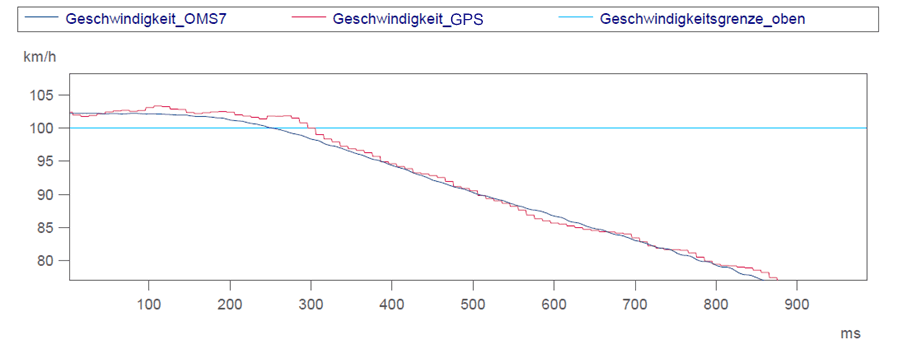Precision is crucial in the field of vehicle measurement systems. The differences between optical-inertial systems and conventional GPS-based systems for speed and distance measurements are striking. Optical-inertial systems are characterized by their accuracy, stability and reliability and offer clear advantages over GPS technologies, which often struggle with measurement inaccuracies.
Greater precision in speed measurement
Optical-inertial systems measure the speed directly at the vehicle axle, which minimizes movement deviations that can occur due to the body structure. With GPS-based systems, on the other hand, the measurement is often influenced by the position of the GPS antenna. As the antenna is mounted on the car body, this leads to deviations, especially during abrupt movements such as heavy braking. These deviations can cause the speed in the data to show unnatural fluctuations that do not exist in reality. As a result, GPS systems are less precise than optical-inertial solutions in many scenarios.
In addition to the problem of mounting, which leads to deviations in the measurement, the GPS system also suffers from the well-known problem of overshoot. This is caused by the Kalman filter, which is often used to smooth GPS data. In dynamic situations such as sudden acceleration or deceleration manoeuvres, the Kalman filter can cause the calculated values to temporarily overshoot the actual speed values before they stabilize again. This behavior affects the accuracy and reliability of measurements in real-time applications and highlights another weakness of the GPS system compared to optical-inertial solutions.
Reliability and accuracy of braking distance measurement
A key advantage of optical-inertial systems is their ability to measure braking distances extremely precisely. The systems record the speed almost in real time, with only a minimal and constant delay in the millisecond range. This constant delay enables extremely precise determination of the moment at which the vehicle falls below a certain speed.
In contrast, GPS systems can distort the braking distance due to greater and variable delays in the speed measurement, resulting in less accurate results. Optical-inertial systems offer reliable and detailed data acquisition due to their stable and constantly low deceleration and are therefore ideal for applications that require maximum precision in braking performance measurement.
The graph shows a comparison of the speed measurements between the optical-inertial system (OMS 7) and a GPS-based system during a deceleration. The blue line marks the upper speed limit at 100 km/h. It is clearly visible that the OMS 7 system provides a more consistent and precise measurement, while the GPS data shows slight fluctuations, especially at high speeds.

Consistency and reproducibility of measurement results
Optical-inertial systems also offer constant measurement accuracy, even during extreme driving maneuvers or abrupt changes in speed. These systems record data stably and independently of external influences such as signal interference, which can make GPS systems more vulnerable. As GPS signals can be disturbed or interrupted by external factors, they lead to inconsistent data, which makes the measured values less reliable.
An outstanding advantage of optical-inertial systems is their high reproducibility of measurement results. The data remains consistent with every measurement, which makes them particularly suitable for precise applications where continuously reliable results are required.
Conclusion: Optical inertial systems as the gold standard for vehicle measurement
Optical inertial systems offer unsurpassed accuracy, reliability and reproducibility in speed and distance measurement thanks to their direct, unadulterated measurement on the vehicle axle. Compared to GPS systems, they ensure that the recorded data is precise, consistent and reliably reproducible in every measurement. These characteristics make them the ideal choice for applications where maximum accuracy and reliability are required.